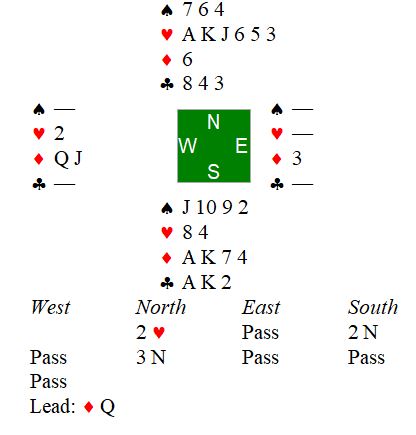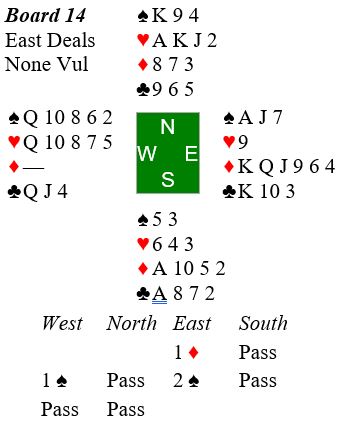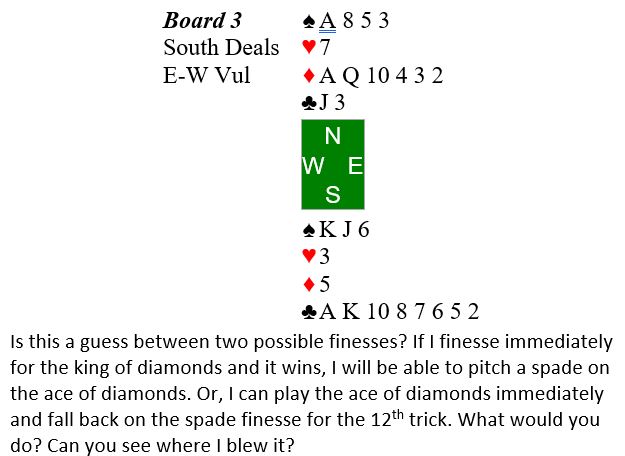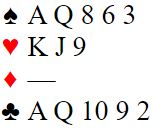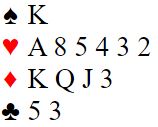Note: This puzzle appeared in Bob Jones’s bridge column on December 14. I hope you will find it as interesting as I did. Since I am not constrained by space limitations, I felt I could add some insights to his useful discussion.
You are south in 3NT. Partner opens the bidding with two hearts (weak) in 1st seat. You respond 2NT, asking partner about his hand. Partner raises you to 3NT, promising a strong 6-card heart suit.
Opening lead by West is the queen of diamonds. You win in hand as East follows with the three of diamonds. Next you lead a low heart toward dummy, West following with the deuce. Here is what you see and what you know about opponents’ hands before you play from dummy:
You know from the opening lead and play so far that West started with the queen-jack and 10 or 9 of diamonds and (from West’s card at trick two) the deuce of hearts. You know one card that East started with was the three of diamonds. That leaves 9 unknown spaces in the West hand and 12 unknown spaces in the East hand.
Now you need to decide how you are going to play the heart suit.
- How would you play hearts when scoring is matchpoints?
- How would you play hearts when scoring is IMPs?
You can count six sure winners: two clubs, two diamonds, and two hearts. You will need to develolp 3 more winners in hearts to make the contract. 4 more heart winners would give you an overtrick. In matchpoints it’s always better to go for the overtrick when you have a better than even chance of winning it.
In thinking about your decision, notice that hearts provide your only entry to dummy.
Your best line of play depends on opponents’ shapes in their holding of the remaining hearts. What are those possible shapes? Should you finess the jack of hearts now?
This is a good one for one (maybe two) of our Wednesday think out loud lessons.
